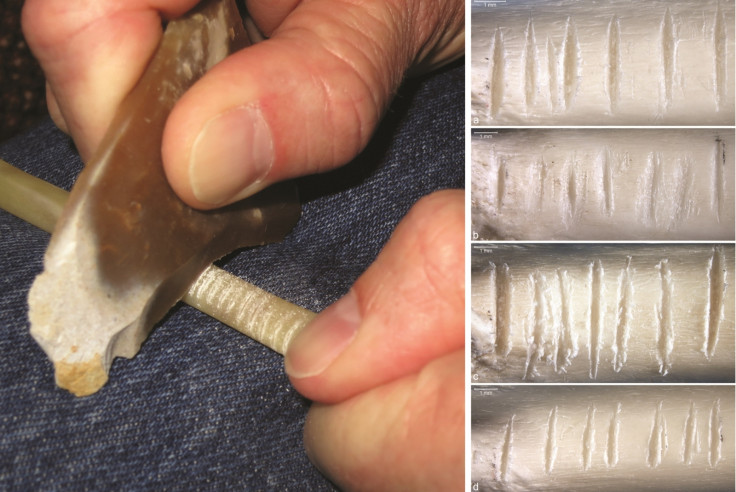Carved raven bone discovered in Crimea is Neanderthal 'art'
The finding suggests that Neanderthals had aesthetic awareness involving a sense of consistency and regularity.
A bone that appears to have been intentionally decorated by a Neanderthal has been discovered in Crimea. The bone is from a raven, and has several finely spaced parallel ridges carved at regular intervals. The find suggests that Neanderthals had an aesthetic awareness previously only attributed to humans.
The bone – of which only a fragment remains – was found at the Neanderthal Zaskalnaya VI rock shelter in Crimea, and described in a paper published in the journal PLOS ONE. It is thought to be between 38,000 and 43,000 years old.
Six of the ridges appear to have been made first, but a little irregularly. Two additional ones carved in later – which are slightly shallower than the rest – appear to have been added to improve the regularity of the pattern.
These finishing touches show that Neanderthals had some sense of regularity and consistency, and arguably an aesthetic awareness, argue the authors of the study, led by Ana Majkic at the University of Bordeaux, France.
In addition to analysing the bone, the study authors recruited several people to make incisions on turkey bones in order to see how difficult it is to make parallel ridges, and so how likely they were to be deliberate.
"The ridges were made in a consistent manner to give visually the impression that they were creating a regular pattern," Francesco d'Errico of the University of Bordeaux, also an author of the study, told IBTimes UK.
The function of the ridges is not clear, the authors say, putting forward two hypotheses. First, the ridges could be intended to add grip to the bone. However, they would not need to be particularly regular for that, they say, adding that that they were more likely to have been intended as a decoration or mark of ownership.

Whether or not this can strictly be described as Neanderthal art is a trickier question. "Who knows what 'art' means? Our concept of art has changed so much in human history. But we think there was an aesthetic dimension here," d'Errico said.
"If it was just a mark of ownership or to facilitate grip of object then they were not obliged to make them so clearly equidistant and similar. So there is a will to produce something that can be recognised visually as consistent. If consistency is an indication of aesthetics, then this supports the idea that Neanderthals did have a sense of the aesthetic."
The study was the first to use methods from experimental psychology to assess a Palaeolithic Neanderthal artefact. Many other objects in Africa and Europe have been found with regular carvings. Analysis of these finds using comparable methods could shed more light on the Neanderthal aesthetic.
© Copyright IBTimes 2025. All rights reserved.






















